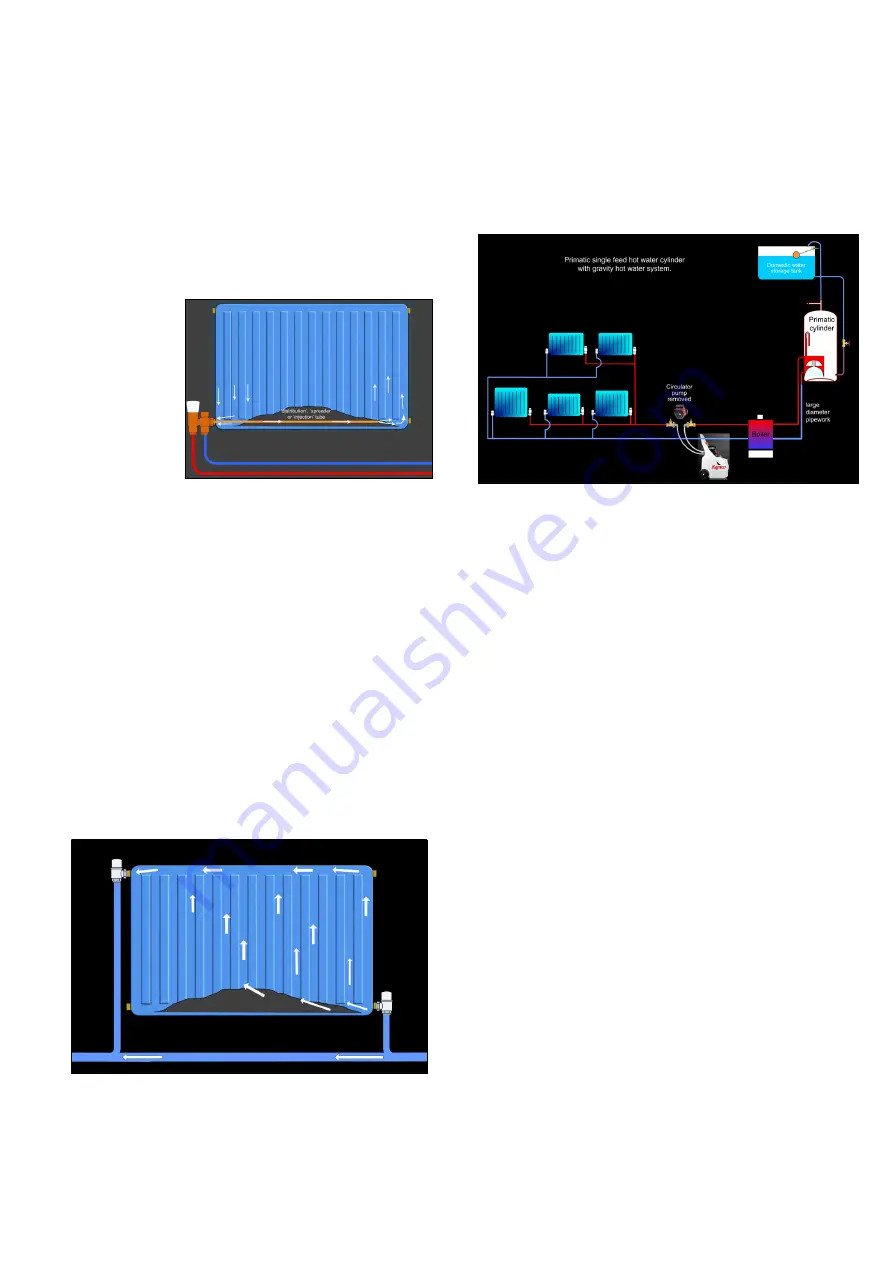
as high as possible.
Quickly open one radiator valve, and the air will often
dislodge and move the semi-solid sludge along the pipe.
Close the radiator valve, pump up the injector again, and
open the other radiator valve. Finally, direct the full flow
of the Clearflow through the radiator, with both valves
open.
Q. Can you power flush a microbore system with
double entry radiator valves?
A. Yes, but we
suggest that
you double the
amount of FX2
to 5 litres. If
the distributor
/
spreader tube
(which directs
the incoming
water towards the far side of the radiator) has broken
away, so that the entrance and exit are effectively only
15-20mm apart, any flushing effect on that radiator will
be minimal. Conversion to opposing inlet and outlet
valves is a better long term proposition.
Q. Can you power flush a single pipe system?
A. If the radiators on a single pipe system have severe
deposit build-ups, or cold panels, then the power flush is
not likely to be successful. BS7593:2006 advises against
power flushing a single pipe system. If you do take on
such a system, improve the chances of success by pre-
treating with two packs of HYPERFLUSH, and operate
the flow reverser more often than usual whilst flushing
individual radiators.
Q.
Can the CLEARFLOW be used on a system which has a
Primatic type single feed cylinder?
A. It is necessary to disconnect or loop out the Primatic
cylinder otherwise the high flow rate of the Clearflow
pump will dislodge the air bubble in the cylinder, leading
to mixing of radiator and tap water.
The Primatic cylinder was usually gravity fed, with
separate pumped flow and return piping to the radiators.
Consequently, connecting your Clearflow onto the flow
and return piping to the Primatic will not enable you to
power flush the radiator circuit.
This would have to be power flushed separately, ideally
by connecting across the system circulator pump
connections.
N.B. Remember that Water Bye-laws prohibit the use
of corrosion inhibitors (other than potable ones!) in
systems with a Primatic cylinder, because of the risk of
contaminating the domestic water supply.
Q. How do you recognise a Primatic cylinder?
A. The system itself should give you a clue. You won’t
find a feed and expansion tank, nor an expansion
vessel anywhere else. Check the cylinder pipe
connections closely. Conventional cylinders have
male BSP connections on the cylinder for pipework
to be connected to, whilst Primatics have female BSP
connections going into the cylinder. If you’re lucky, you’ll
see the word ‘Primatic’ stamped into the cylinder near
the top.
Q. If the system is a gravity hot water system, with a
separate non-pumped hot water circuit leading away
from the boiler, won’t that reduce the flow rate of
water through the radiators when carrying out the
individual radiator flush?
A. If you use the circulator pump adapter leads to
connect across the circulator pump connections, or
connect onto radiator tails, you shouldn’t lose much of
the flow through the large diameter pipework of the
gravity hot water circuit. The boiler heat exchanger will
act as a large diameter by-pass.
Page 10




































